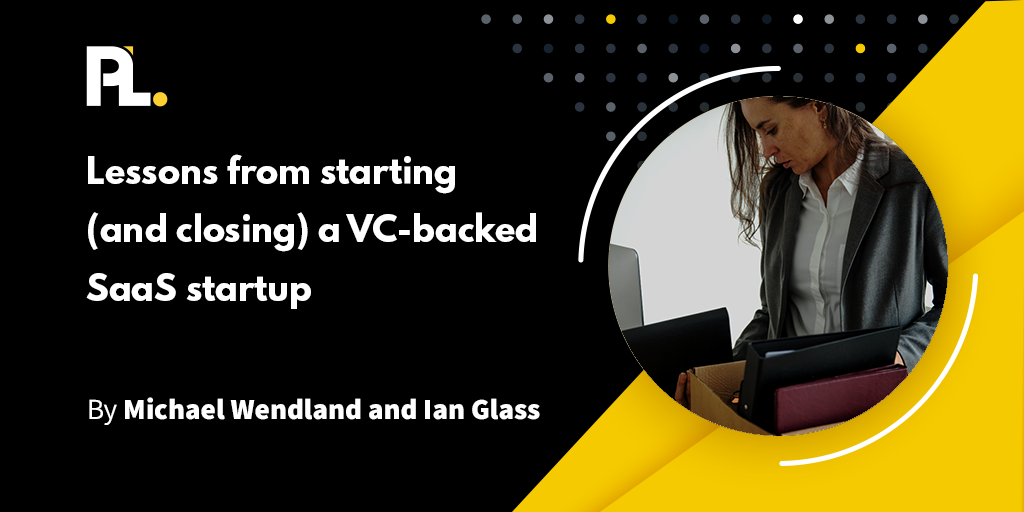
First principles thinking helps develop effective product-led growth strategies. This reverse-engineered approach to problem-solving helps you question the root cause of problems and resist the urge to make assumptions to uncover lasting solutions.
In this article, you’ll learn about the first principles for product management and how to apply this technique to your product-led growth (PLG) strategy.
Why First Principles Thinking Can Help Optimize Your Product-Led Strategy
Applying first principles to your product strategy forces managers to put on a science hat and resist the urge to make assumptions about adding value.
Seasoned managers turn to first principles because they understand that problem-solving and building product knowledge on prior assumptions can lead to bad decisions. PLG is not a one-size-fits-all approach. A solution to one company’s onboarding drop-off won’t always work for a competitor.
First principles thinking is about breaking down problems or systems into smaller pieces and using them to develop a creative solution. Rather than following what others are doing, you create your own hypothesis based to achieve innovative change.
The philosophy of first principles thinking is simple, and Aristotle put it best when he defined it as “the first basis from which a thing is known.” A first principle cannot be deduced any further, and it is an indisputable truth upon which you can build.
Applying first principles thinking to product management takes three phrases:
First, identify the problem you’re having. Product managers need to know the problem to develop a solution. Think about the current state of users and what’s their desired state.
Then, break down the problem. Break away from thinking by analogy, and don’t solve for vanity metrics. Product managers need to ask questions and dig further to understand how systems work and explore why the problem is occurring. The five why analysis is one way to do this. Problem observations need to be backed by accurate data to make a better-informed decision or guess.
Finally, create a new solution. Construct a solution for the problem using the facts and test your hypothesis.
A big believer in first principle thinking is Elon Musk, the CEO of Tesla and SpaceX.
“I think it’s important to reason from first principles rather than by analogy. You boil things down to the fundamental truths and then reason up from there.”
First principle thinking is a mental exercise requiring much work, deep research, and even more profound thinking. But the following benefits make all that hard work worthwhile for a successful product strategy.
Once you’ve grasped those fundamental principles, it’s embedded into the DNA of your company, and magic happens.
What It Takes to Have a Successful Product-Led Strategy
A successful product-led growth strategy is a cross-functional effort between engineering, consulting, marketing, and product.
My team conducted investigative research on the companies that are leading the way when it comes to product-led growth. Our findings identified four principles that have been key to their success.
- Deliver Value Fast
- Recurrence of Value
- Virality
- High Switching Costs
Each of these can be applied by PLG companies to grow its product successfully. Mastering these elements gives your product-led growth strategy the best chance to succeed. (More on these four principles below.)
Imagine that companies have two choices: the blue pill or the red pill.

Choosing the blue pill puts companies at the lower end of the market. There is a high volume of customers ready for taking. However, companies that take the blue pill will try to land more significant customers, moving them towards the ‘sweet spot’ where they can reach more of their ideal customers. Zoom and AirTable have chosen this route.
On the other hand, companies that choose the red pill are doing the opposite. They tend to be stronger in the B2B world and can afford to take the risk of going straight in and targeting their ideal customers straight away.
Taking both routes is very difficult.
To do so, you deeply understand the principles that lead to success. Keep these principles in mind while creating strategies, and your team executes them.
How We Identified The First Principles of Product-Led Growth
We have a saying at OutSystems that we live by:
“Eat your broccoli.”
If you’re not a fan of broccoli, you’re in luck. We’re not suggesting that you add more veg to your diet. Instead, it’s about going through the pain-staking task of collecting facts and data that allow you to create a strong set of principles on which you’ll anchor your strategy.
Here’s an aggregate view of how we put the “eat your broccoli” concept into place to help us identify key principles:

The Approach
We looked carefully at relevant data and started by observing 100 plus blog posts and research reports like the one above. From there, we kept an eye out for similarities between the companies we analyzed.
Some of the companies stood out to us more than the others. So, we went deeper and researched product-led organizations such as Zoom, Slack, and HubSpot.
The Results
Our in-depth research provided insights into successful product-led growth and B2B. Most of our findings are based on consumer or prosumer products, and prices range from around $20 to $30 per month.
Here’s what we learned:
- Most companies didn’t suffer from price friction, which is common in B2B.
After all, if you’re asking your customers to hand over thousands of dollars each year, you have many more factors to consider. Procurement rules and processes must be followed, which can be a giant headache because of the complexity of the purchase processes.
- Consider set-up time. How long does it take customers to set up your product or service? Calendly makes it simple for people to get started, and an account can be up and running in less than 60 seconds.
- Reducing possible frictions is crucial to launching an effective product-led growth strategy.
- Don’t let your support team be an afterthought. How is your support team? Will they be able to handle ten times the customers?
- Viral growth is hard, and simply adding the invite link to the product isn’t enough to make you successful. You’ve got a lot of other essential things to consider.
The 4 First Principles of Successful Product-Led Strategies
What are the first principles when creating and executing a successful product-led growth strategy?
Value is a common thread through each of the first principles we uncovered in our research.
1. Deliver Value Fast
Companies that prioritize delivering value within minutes are more likely to have success.
When we say value, we’re talking about business value. Customers must be content with the value they get from your product.
The path to the ”Aha!” moment – the first instance of value – needs to be friction-free. Customers are impatient. They’re busy and need to be able to get the value from the product within minutes.
2. Build Recurring Value
Next, you need to transform the first value into a recurring value. In other words, you must keep retention levels high and get customers coming back for more.
Determine retention by identifying actions that provide value and develop habits. Top performers identify retention cycles and product development strategies to enforce them (e.g., Zoom calendar plug-ins).
3. Drive Virality
Virality is the ability of customers to drive the continued adoption inside an organization without seller intervention or sales involvement. The cost of acquiring new users should be as close to zero as possible, and many products, such as Slack or Zoom, rely on a decreasing marginal cost of adoption.
Mastering product virality can skyrocket your sales and put your product in front of millions of potential customers.
Types of Virality
- Word of Mouth: Disruptive value motivates organic dissemination.
- Network Effect: Value for users increases as more people get into the product.
- In-App Brand: Convert guests into users with in-app brand promos.
- Incentivized: Subsiding users with incentives.
Here are examples of companies that practice different types of virality:

Which of these four different types of virality will work for your company?
You can test each one to find the answer to this question. You might even find that you can use a combination of the four areas.
4. Create High Switching Costs
The effect is compound if your product contains critical data for someone’s business. Think of it like this: as adoption spreads, the product stickiness increases.
Products that hook into a company’s processes or data increase the cost of switching.
Companies that have low switching costs include GoToMeeting by Zoom.
A great example of a high switching cost product is Salesforce from HubSpot.
Examples of First Principles Analysis of Famous PLG Companies
Knowing the first principles of a successful product-led growth strategy, you can start implementing them into your business and processes.
The report below rates different companies on each of the four principles. Each principle is prioritized, beginning with Immediate LTFV as the most important, and ending with high switching costs.

Do the same with your own company, competitors, and companies that inspire you.
How Can I Apply These First Principles to My Own PLG Strategy?
Improve the success of your product-led growth strategy with these four principles. Begin by plugin them into a company roadmap.
Focus on delivering high value to create adoption and usage.
As long as you provide high value, you can keep your switching costs high and retain customers more effectively.
You might discover that other first principles work even better for your product-led growth strategy than those mentioned in this post, and that’s okay. Adapt whatever first principles work best for your product management, and sign up for our free PLG fundamentals course to learn even more growth strategies for product development.





%20(1).png)















